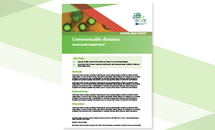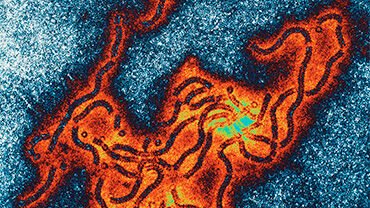Mumps - Annual Epidemiological Report for 2022
In 2022, 27 EU/EEA countries reported 2 593 mumps cases, with an overall notification rate of 0.7 cases per 100 000 population. This was slightly higher than the notification rate reported in 2021 (0.4 cases) but significantly lower than the notification rates reported during the preceding three years (range 1.7–4.2 cases).
Executive Summary
- In 2022, there was a shift towards younger age groups for mumps cases, with a median of 10 years compared to the previous four years (median 13-21 years).
- The overall male to female ratio for mumps cases was 1:1.18. Notification rates for males were higher than for females in the younger age groups (1–4, 5–9 and 10–14 years) and slightly lower for males than females among adults (20–29, and 30+ years groups).
- Those aged 1–4 and 5–9 years experienced the highest age-specific notification rates.
- Among notified cases with known vaccination status with the measles, mumps and rubella (MMR) vaccine, 24% were unvaccinated. The highest proportion of unvaccinated cases were among the 30+ years group (71%) followed by those between 20 and 29 years (38%) and those aged under one year (below the age of routine vaccination against mumps, 25%). The proportion of unvaccinated cases among children 1–4 years, which is the when the first dose of MMR is administrated in most countries, accounted for 15%.
- Nearly one-third of cases with reported complications (29%) with known vaccination status were among unvaccinated cases, the majority of which were in the 30+ years age group.
- Continuous high-quality surveillance, outbreak investigations and accelerated efforts to increase the uptake of both routine childhood immunisation as well as catch-up campaigns aimed at adolescents and adults, are key tools to closely monitor the mumps epidemiology in the EU/EEA and close immunity gaps in the population.
Download

Mumps - Annual epidemiological report for 2022
- EN - [PDF-933.6 KB]






